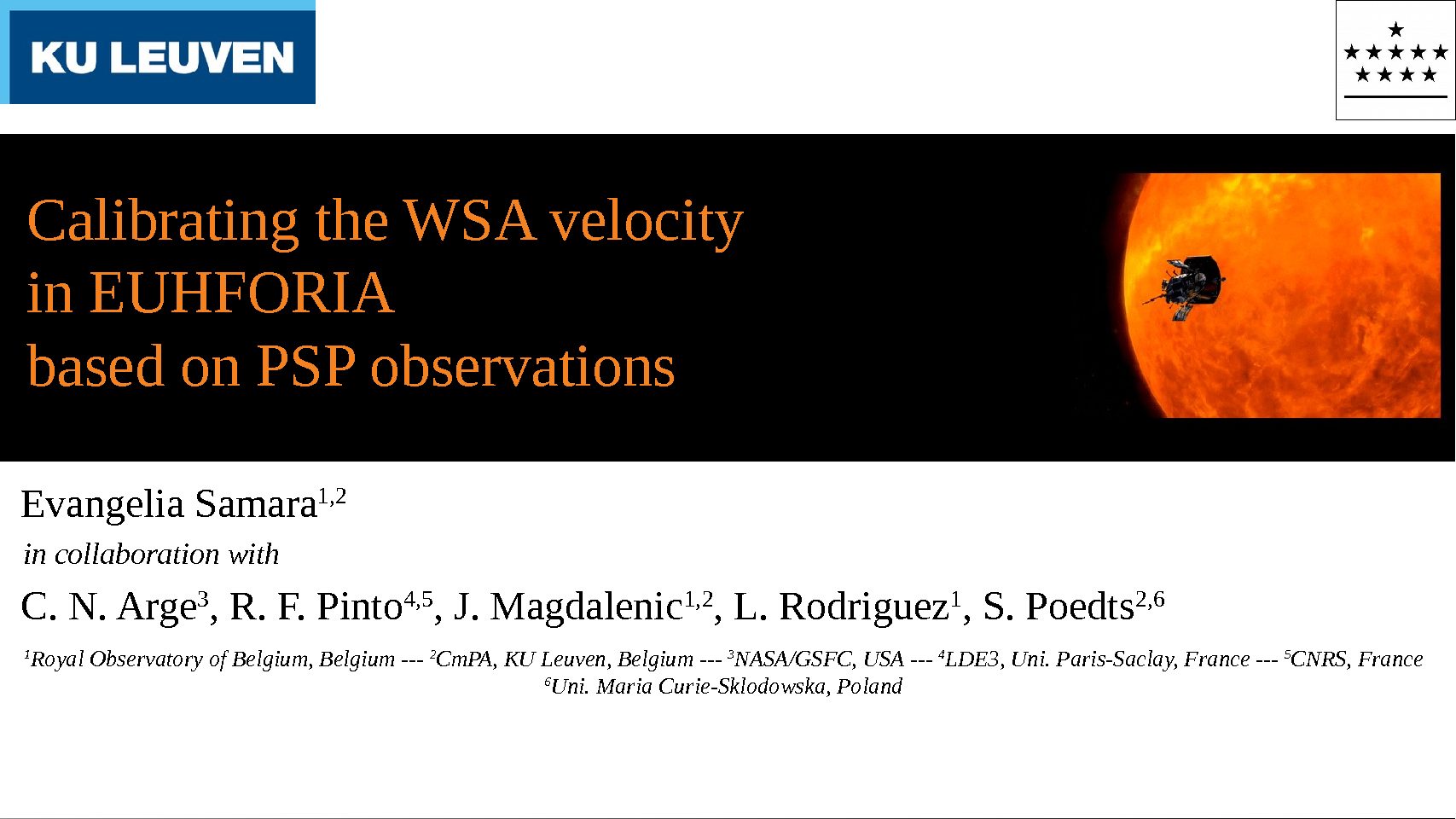Authors: Evangelia Samara (Royal Observatory of Belgium, Belgium and KU Leuven, Belgium), Charles N. Arge (NASA/GSFC, USA), Rui F. Pinto (LDE3, Uni. Paris-Saclay, France and IRAP, CNRS, France), Jasmina Magdalenic (Royal Observatory of Belgium, Belgium and KU Leuven, Belgium), Luciano Rodriguez (Royal Observatory of Belgium, Belgium), Stefaan Poedts (KU Leuven, Belgium and Uni. Maria Curie-Sklodowska, Poland)
Coronal models, usually extending between the solar photosphere and ~30 Rs, are an integral part of many space weather forecasting tools. They reconstruct the magnetic field in the solar corona and provide the necessary plasma conditions for initiating heliospheric models such as EUHFORIA or Enlil. A big gap in literature is identified when it comes to the validation of such models because of lack of observations, especially in situ. Nevertheless, the launch of the Parker Solar Probe (PSP) has provided, for the first time, in situ observations very close to the Sun that can help with the evaluation of such models. In this work, we aim to calibrate the Wang-Sheeley-Arge (WSA) semi-empirical velocity formula used in EUHFORIA for the reconstruction of plasma and magnetic parameters at 0.1 AU. The goal is to achieve the most realistic conditions possible close to the Sun in order to drive more consistently the solar wind throughout the heliospshere. For that, we exploit PSP in situ measurements obtained from the first 8 perihelia. We show how a parametric study of the WSA velocity formula influences the modeled velocity distributions very close to the Sun, how these distributions are compared to what PSP has measured, and present the relevant forecasting results at the PSP position and Earth.



